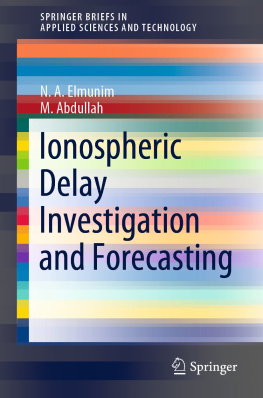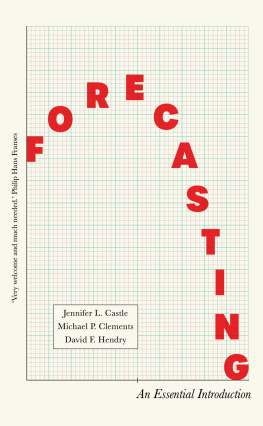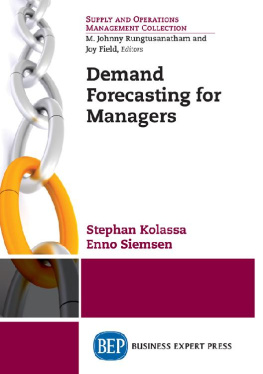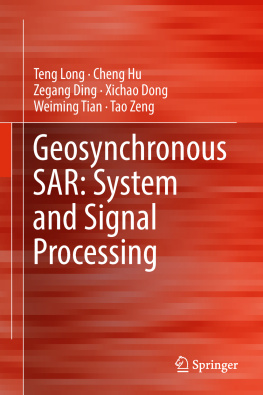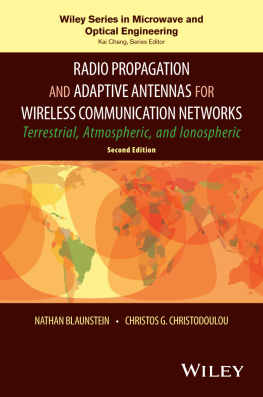SpringerBriefs in Applied Sciences and Technology
Series Editor
Andreas chsner
Griffith School of Engineering, Griffith University, Southport, QLD, Australia
SpringerBriefs present concise summaries of cutting-edge research and practical applications across a wide spectrum of fields. Featuring compact volumes of 50 to 125 pages, the series covers a range of content from professional to academic.
Typical publications can be:
A timely report of state-of-the art methods
An introduction to or a manual for the application of mathematical or computer techniques
A bridge between new research results, as published in journal articles
A snapshot of a hot or emerging topic
An in-depth case study
A presentation of core concepts that students must understand in order to make independent contributions
SpringerBriefs are characterized by fast, global electronic dissemination, standard publishing contracts, standardized manuscript preparation and formatting guidelines, and expedited production schedules.
On the one hand, SpringerBriefs in Applied Sciences and Technology are devoted to the publication of fundamentals and applications within the different classical engineering disciplines as well as in interdisciplinary fields that recently emerged between these areas. On the other hand, as the boundary separating fundamental research and applied technology is more and more dissolving, this series is particularly open to trans-disciplinary topics between fundamental science and engineering.
Indexed by EI-Compendex, SCOPUS and Springerlink.
More information about this series at http://www.springer.com/series/8884
N. A. Elmunim and M. Abdullah
Ionospheric Delay Investigation and Forecasting
1st ed. 2021

Logo of the publisher
N. A. Elmunim
Department of Electrical Engineering (ECE), College of Engineering, Princess Nourah bint Abdulrahman University, Riyadh, Saudi Arabia
M. Abdullah
Department of Electrical, Electronic and Systems Engineering (EE), Space Science Centre (ANGKASA), College of Engineering and Built Environment, The National University of Malaysia, Bangi, Malaysia
ISSN 2191-530X e-ISSN 2191-5318
SpringerBriefs in Applied Sciences and Technology
ISBN 978-981-16-5044-4 e-ISBN 978-981-16-5045-1
https://doi.org/10.1007/978-981-16-5045-1
The Author(s), under exclusive license to Springer Nature Singapore Pte Ltd. 2021
This work is subject to copyright. All rights are solely and exclusively licensed by the Publisher, whether the whole or part of the material is concerned, specifically the rights of translation, reprinting, reuse of illustrations, recitation, broadcasting, reproduction on microfilms or in any other physical way, and transmission or information storage and retrieval, electronic adaptation, computer software, or by similar or dissimilar methodology now known or hereafter developed.
The use of general descriptive names, registered names, trademarks, service marks, etc. in this publication does not imply, even in the absence of a specific statement, that such names are exempt from the relevant protective laws and regulations and therefore free for general use.
The publisher, the authors and the editors are safe to assume that the advice and information in this book are believed to be true and accurate at the date of publication. Neither the publisher nor the authors or the editors give a warranty, expressed or implied, with respect to the material contained herein or for any errors or omissions that may have been made. The publisher remains neutral with regard to jurisdictional claims in published maps and institutional affiliations.
This Springer imprint is published by the registered company Springer Nature Singapore Pte Ltd.
The registered company address is: 152 Beach Road, #21-01/04 Gateway East, Singapore 189721, Singapore
Preface
Ionospheric delay is an important factor in understanding ionospheric morphology. Modelling practices ensure comparatively precise positioning, navigation, satellite communication and electromagnetic wave propagation. The investigation and forecasting of transionospheric propagation errors offer significant information as a reference in satellite and space navigation, space geodesy and radio astronomy applications. The broadcast Klobuchar model, which is the most common model used in ionospheric correction, can correct only 50% of the total effect. Thus, identifying the best approach to the ionospheric delay is necessary to effectively eliminate such effects over equatorial regions. This study focuses on an assessment and forecast of transionospheric propagation errors to attain precise measurements for improved results using a developed approach called the Holt-Winter method. This method was modified to investigate the forecasting of the ionospheric delay using global positioning systemtotal electron content (GPSTEC) measurements to enhance the knowledge on the effects of ionospheric delay errors on GPS navigation in equatorial regions. The Holt-Winter method describes the periodicity of the ionospheric delay. Developed equations perform well in different regions of Malaysia during quiet periods and periods of geomagnetic disturbance. The results obtained from this study demonstrated the ionospheric delay variability, as well as the effectiveness and capability of the Holt-Winter method, which can accurately forecast the ionospheric delay and thus can be used as a regional model in equatorial regions. These results are highly beneficial in providing GPS data correction to GPS users and assisting the future development of satellite-based augmentation systems in equatorial regions.
N. A. Elmunim
M. Abdullah
Riyadh, Saudi Arabia Bangi, Malaysia
Acknowledgements
This book was made possible with the help of God and the inspiration, guidance, comments and support of several people. I thank all of those who have contributed to my work in various ways.
Firstly, I would like to give heartfelt thanks to my beloved parents for providing consistent encouragement for my intellectual endeavours and for supporting my educational journey, while instilling in me the confidence that anything is possible with hard work. I am highly indebted to them.
I acknowledge the National University of Malaysia (UKM), Space Science Centre (ANGKASA) and National Observatory Langkawi for providing the GISTM data from the UKM and Langkawi station. Furthermore, I am grateful to the Department of Survey and Mapping Malaysia (DSMM) for providing the GPS data from the TGPG, UUMK and MUKH stations. I also thank the UKM and Malaysian Government through the Ministry of Education for the research grants (FRGS/2/2013/TK03/UKM/02/1 and GUP-2013-047) that have enabled me to pursue this project.
Abbreviations
ARIMA
Autoregressive Integrated Moving Average
ASCII
American Standard Code for Information Interchange
C/A
Coarse-Acquisition
CDMA
Code Division Multiple Access
CME
Corona Mass Ejections

